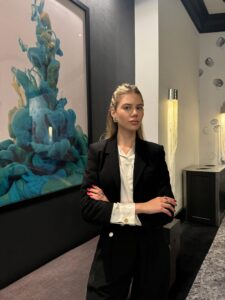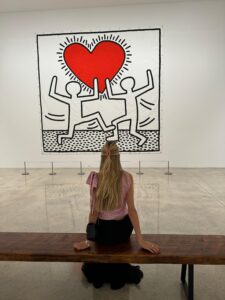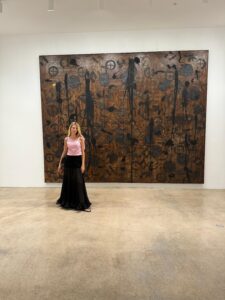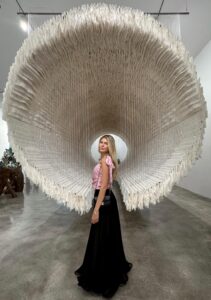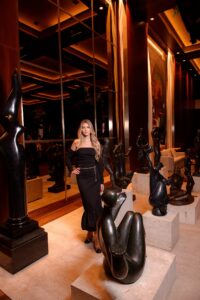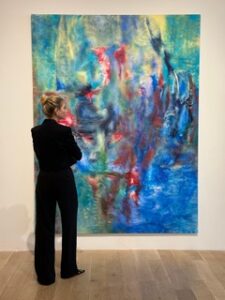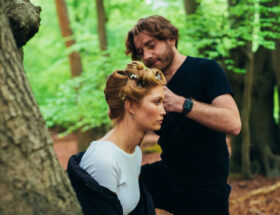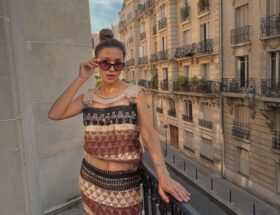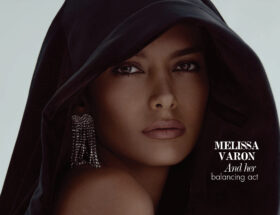In the ever-evolving art world, the role of the advisor is being redefined — not just as a market guide, but as a visionary, storyteller, and advocate for legacy. We spoke with Rebecca Ferreira, founder of Rivka Art Advisory, about the delicate balance between aesthetics and investment, the growing influence of Brazilian artists, and what it truly means to build a meaningful collection in the 21st century.
Redefining the Role of an Art Advisor
Rebecca, what inspired you to become an art advisor, and how do you see this role evolving in the 21st century?
My journey into art advising began with a deep desire to connect people with meaningful art. I’ve always been fascinated by the intersection of aesthetics, culture, and investment. As the founder of Rivka Art Advisory, I realized early on that collectors need more than access — they need context, education, and a long-term strategy. Today, the role of the advisor is evolving rapidly. It’s no longer just about sourcing artworks; it’s about curating a vision, identifying value beyond trend cycles, and guiding clients through an increasingly global and digital market.
How do you balance artistic appreciation with market strategy when guiding collectors and investors?
Balancing passion and pragmatism is at the core of what we do at Rivka. We never compromise on artistic integrity, but we also bring clarity around resale potential, provenance, and liquidity. Every acquisition is aligned with the client’s long-term goals. The ideal scenario is when a work resonates emotionally and performs well in the market — this duality is the sweet spot of collecting today.
Experience & Expertise in the Art Market
Your work connects past, present, and future through art. Can you share an example of a piece that embodies this philosophy?
A powerful example is a recent acquisition of a large-scale work by a Latin American female artist whose visual language references Indigenous mythologies and modern abstraction. It speaks to historical narratives while remaining grounded in contemporary aesthetics. For us, collecting is about legacy — and this piece connects generations, geographies, and futures in a single frame.
How did your experience at Sotheby’s Institute working in the Hamptons shape your approach to curation and collector relations?
The Sotheby’s Institute gave me a solid foundation in market intelligence, while the Hamptons taught me how to build trust with clients in intimate, high-stakes environments. Both experiences emphasized that art advising is as much about people as it is about art. It’s about listening, anticipating needs, and staying five steps ahead in a fast-changing market.
Brazilian Art & Global Influence
What are the biggest challenges and opportunities for Brazilian artists in the global art market?
Brazilian artists have incredible creative power, but they still face challenges in visibility, infrastructure, and international access. At Rivka, we work to bridge that gap. There’s growing global interest in Latin American narratives — especially those exploring identity, land, and resistance. Our goal is to place these artists in collections that amplify their voice and legacy.
How do you collaborate with architects and designers to integrate art into luxury spaces?
We see art as a living, breathing part of any space. Working with architects and designers, we help integrate collections into interiors in a way that feels organic yet powerful. This goes beyond decoration — it’s about storytelling. Art brings soul to a home or project, and we ensure the works reflect the client’s identity and vision.
Building a Collection with Meaning
What key factors do you consider when advising clients on acquiring or investing in art?
We consider artistic merit, market trajectory, provenance, and the piece’s fit within a larger collection. But equally important is alignment with the collector’s values. We always ask: Does this piece elevate the story we’re telling? Will it stand the test of time? If the answer is yes, then it’s worth considering.
What advice would you give to someone looking to start their own art collection?
Start with curiosity. Educate yourself. Visit fairs, galleries, and studios. Work with professionals who share your values. And most importantly, collect with intention. A great collection isn’t built in one season — it evolves with you. Let it be a reflection of who you are and what you stand for.

